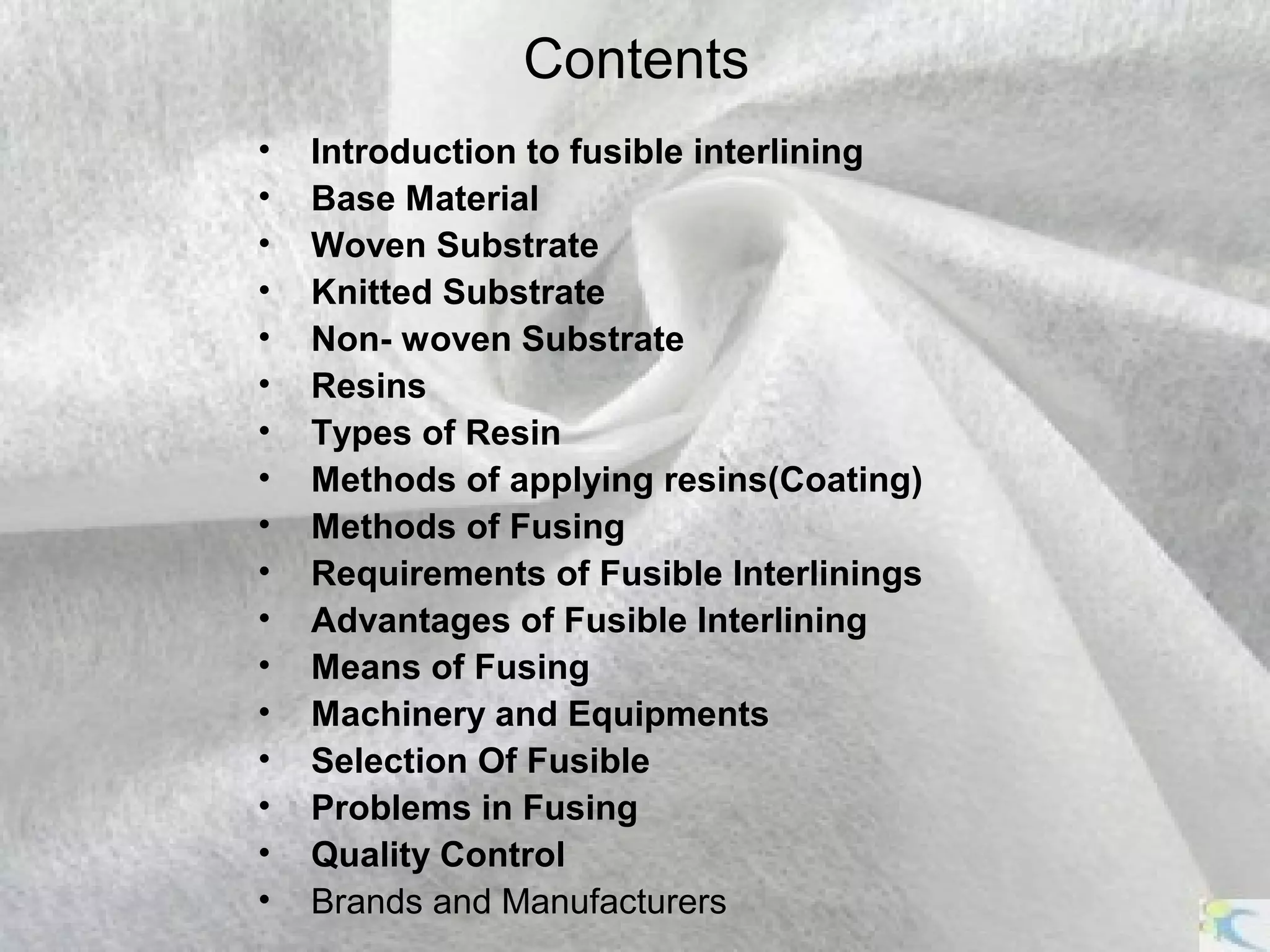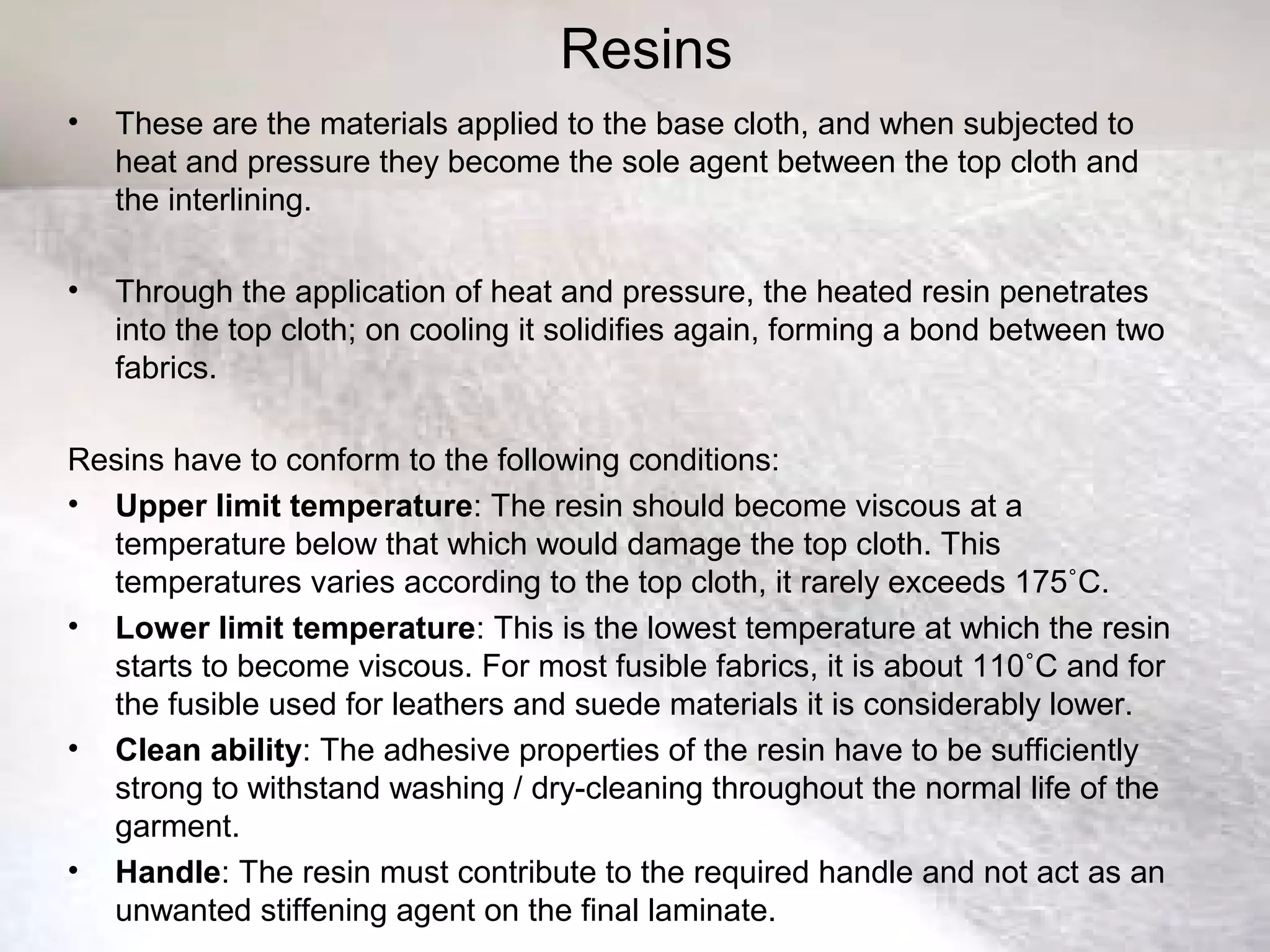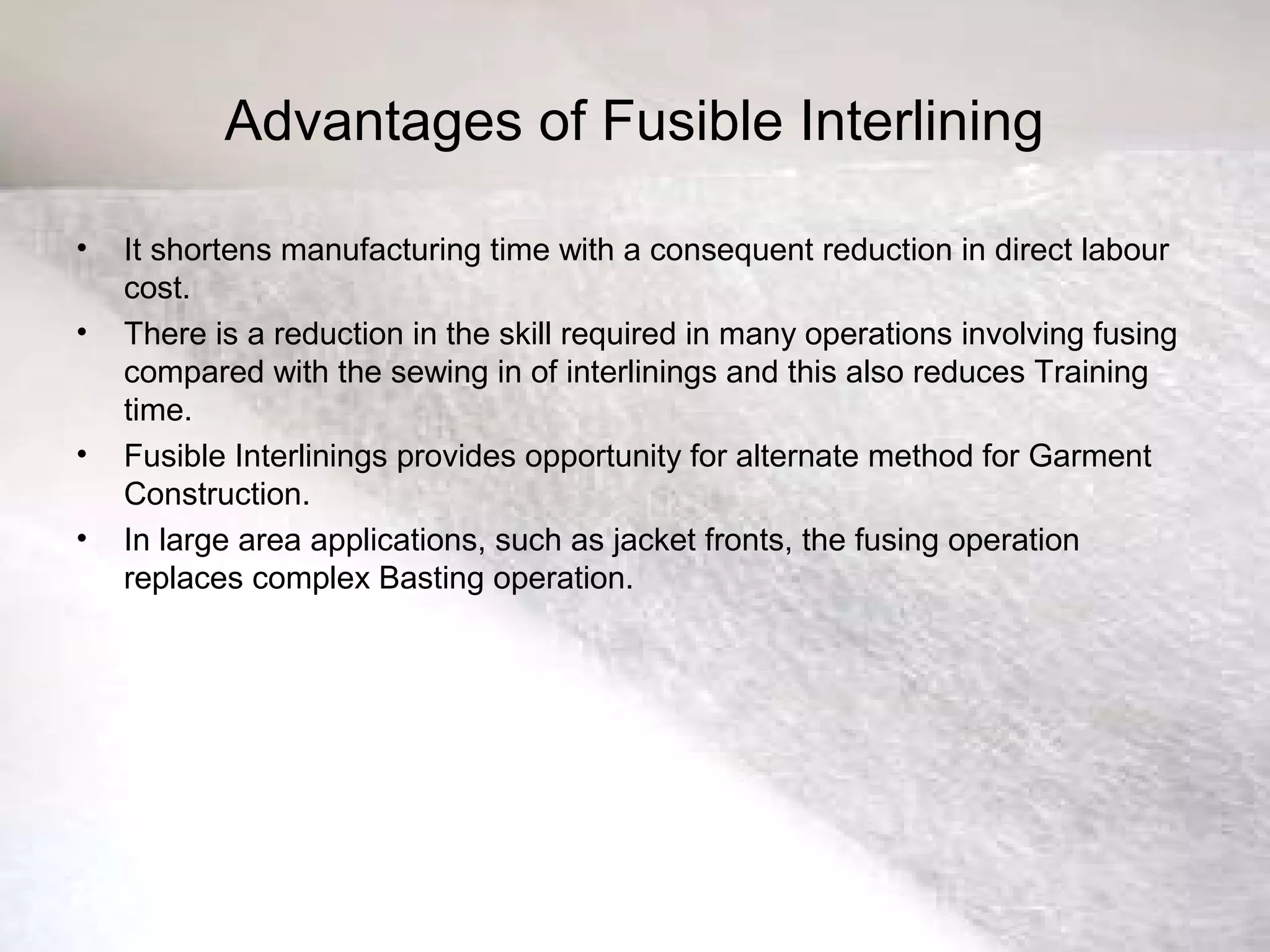This document provides an overview of fusible interlinings, including the base materials, resins, coating methods, fusing methods, requirements, advantages, machinery, quality control, brands, and problems. It discusses the key components of fusible interlinings - the base material (woven, knitted, or non-woven), thermoplastic resin, and coating. It also describes different types of resins, methods of applying the resin coating, and means of fusing using presses. Quality control and selecting the appropriate fusible interlining for the application is also covered at a high level.























